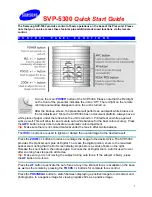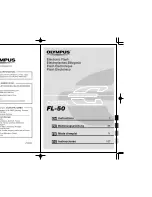
11
Brightness
Image Processing¤
Algorithm
Pixels
Two Dimensional Section of a Digital Image¤
Using TruePic Image Processing
c
2000 - Imerge Consulting Group
Brightness
Image Processing¤
Algorithm
Pixels
Two Dimensional Section of a Digital Image¤
Using Conventional Image Processing
c
2000 - Imerge Consulting Group
As camera resolutions move higher, users want the flexibility not
to shoot at the camera’s maximum resolution for sending, (for
example), images via email or for posting images on a web site.
A typical digital camera records incrementally smaller sizes, com-
monly referred to as SQ modes, which include medium resolu-
tion, low resolution and lowest resolution. What is seldom men-
tioned is the fact that choosing these lower resolution options
with a camera other than the Olympus CAMEDIA E-10 Zoom
SLR or the Olympus C-2500L, at resolutions other than “highest”
necessitates throwing away important pixel data in the image.
The pixels are actually thrown out to accommodate a smaller
image size. Therefore images captured in these lower SQ modes
have degraded image quality for the simple reason that there are
less pixels in the smaller image.
For example, a high resolution file at 2240 x 1680 pixels must
be reduced in order to fit into a smaller resolution image space
of 640 x 480. A typical method to achieve this is to “step down”
the resolution by identifying surrounding pixels by using an al-
gorithm to identify them and throw them away, deeming them
less necessary to the final image.
TruePic™ Technology Advanced Solution
The CAMEDIA E-10 Zoom SLR with TruePic™ Technology dra-
matically improves image quality at lower resolution SQ modes
by using a far greater sampling area and an advanced algo-
rithm and does not “throw away” pixels when using SQ modes.
Rather, the algorithm learns the pattern of the image and repli-
cates it at lower resolutions.
Fringe-less Images with TruePic™
TruePic™ Technology also performs another function within
the camera’s ASICS. It eliminates blue and green artifacts by
70% to 80% (commonly called fringing) and creates smoother
edges in color transition areas of the image. The result is supe-
rior image quality.






































